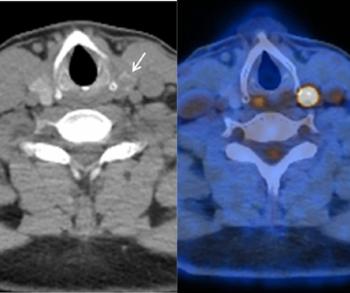
FDA clears Siemens’ sliding gantry CT
Siemens announced that it has Food and Drug Administration approval for a sliding gantry version of its Somatom Plus 4 CT system, which can be set up in a radiation therapy treatment room to give almost-real-time images to the radiation
Siemens announced that it has Food and Drug Administration approval for a sliding gantry version of its Somatom Plus 4 CT system, which can be set up in a radiation therapy treatment room to give almost-real-time images to the radiation oncologist.
Designed to be used in conjunction with a linear accelerator, the scanner images a patient lying on the treatment table by having the gantry make incremental movements during the scanning process rather than having the table turn, as in a traditional CT setting.
The advantage in having the CT close to the (radiation) delivery machine is that you dont have to reposition the patient (for therapy), said Mark McCarthy, senior product manager in Siemens Oncology Care Systems.
Based on tumor localization data from the scan, the linear accelerator can then almost immediately deliver optimal radiation therapy to the tumor while sparing maximal normal tissue.
Until now, the patient typically was scanned some timeperhaps daysbefore actual therapy, McCarthy said, making it impossible to position the patient in precisely the same location and attitude for therapy. In addition, the tumor may have changed size or position since it was imaged and the patient may have gained or lost weight, all of which detract from accurate treatment.
In theory, this allows you to know where the target is the moment before treatment, McCarthy said. Depending on equipment availability, scans could be repeated at the time of each treatment.
Siemens is installing the combination Somatom Plus 4 with sliding gantry and its Primus linear accelerator at Morristown Memorial Hospital in Morristown, NJ. The project is a collaboration with Dr. James Wong, the hospitals chairman of radiation oncology, and Dr. Minoru Uematsu of the National Defense Medical College in Saitama, Japan.
Now that they have the hardware, the collaborators next goal is to develop a digital interface that will allow automatic targeting of the linear accelerator.
Newsletter
Stay at the forefront of radiology with the Diagnostic Imaging newsletter, delivering the latest news, clinical insights, and imaging advancements for today’s radiologists.




























